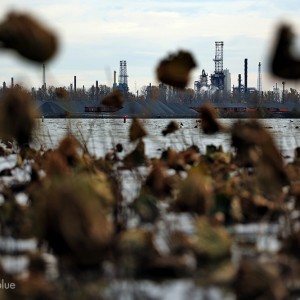Federal Water Tap, August 18: More Water for Lake Mead, But Levels Still Expected to Drop
One year after a record-low release of water from Lake Powell – which helped push the larger Lake Mead, located downstream on the Colorado River, to its lowest level since the bellwether reservoir was filled eight decades ago – federal officials will open the gates a little wider.
According to a provisional operating plan, dam managers will most likely release nine million acre-feet of water from Powell in 2015, a 20 percent increase. Yet because more water is promised to users downstream and is lost to evaporation than will enter Lake Mead, water levels will continue to drop. The primary water source for Las Vegas is projected to fall another 2.1 meters (seven feet) by next August – to a level that would trigger first-ever water restrictions for Arizona and Nevada.
The Bureau of Reclamation tweaks water releases each year in order to keep the amount of water in the two big reservoirs in balance. Amid a 14-year dry period, both reservoirs have dropped to levels that have raised concerns about hydropower generation and water supplies.
Record Corn and Soybean Harvest Forecasted
The U.S. corn harvest is expected to hit 14 billion bushels for the first time, according to a U.S. Department of Agriculture farm survey.
If it holds, the total would break a record set in 2013. Yields are also expected to set a new standard.
The forecast for soybeans is also for record highs in production and yield.
California Almond Boom Rolls On
Continuing a decades-long trend, California farmers will increase their almond acreage next year, according to a U.S. Department of Agriculture report.
An estimated 48,000 acres of new almond orchards will be planted next year, an estimate based on a first-ever survey of nursery sales. The increase is roughly 40 percent higher than the 10-year average.
Richard Waycott, president and CEO of the Almond Board of California, which commissioned the survey, told Circle of Blue that the numbers reflect commitments made at least two years ago, when growers would have submitted orders to the nurseries.
“The report reflects decisions not made in the context of the current drought and current water availability,” Waycott said.
The location of the new orchards is not known. Waycott said that the board initially wanted details at the county level, but simplified its request to get the nurseries to release their data.
Almond acreage in California, which produces 100 percent of the U.S. crop, has doubled since 1995.
100 Feet to the West. Perfect.
The Rio Grande will be relocated and the U.S. agency that manages waters shared with Mexico sees no problem with the move.
The river channel, as river channels do, has migrated uncomfortably close to a Burlington Northern Santa Fe railway line. The International Boundary Water Commission will shift the channel 30 meters (100 feet) to the west and add a levee in its place to bring the flood control system up to federal standards. An environmental review found that the project would not cause undo harm to land and wildlife.
Municipal Stormwater Assessment
How effective is the U.S. Environmental Protection Agency in reducing the amount of pollution carried by rainstorms into waterways? The agency’s internal watchdog aims to find out.
The EPA’s Office of the Inspector General is beginning an evaluation of the regulator’s stormwater programs. The office will assess the effectiveness of consent decrees and how best to track each city’s progress.
Who Benefits from Conservation Payments?
Do federal payments to farmers for land conservation practices, which equaled $US 6 billion in 2013, result in changes that would not have otherwise taken place? In other words, is the government paying for something that farmers would do anyway?
The U.S. Department’s of Agriculture’s economics branch found that the answer depends on the practice. Installing vegetative buffers that reduce the flow of nutrients into streams, for example, are comparatively costly and provide few benefits to the farm. They were less likely to be implemented without payments than changes to field management such as adopting different tilling methods.
Federal Water Tap is a weekly digest spotting trends in U.S. government water policy. To get more water news, follow Circle of Blue on Twitter and sign up for our newsletter.
Brett writes about agriculture, energy, infrastructure, and the politics and economics of water in the United States. He also writes the Federal Water Tap, Circle of Blue’s weekly digest of U.S. government water news. He is the winner of two Society of Environmental Journalists reporting awards, one of the top honors in American environmental journalism: first place for explanatory reporting for a series on septic system pollution in the United States(2016) and third place for beat reporting in a small market (2014). He received the Sierra Club’s Distinguished Service Award in 2018. Brett lives in Seattle, where he hikes the mountains and bakes pies. Contact Brett Walton






Leave a Reply
Want to join the discussion?Feel free to contribute!